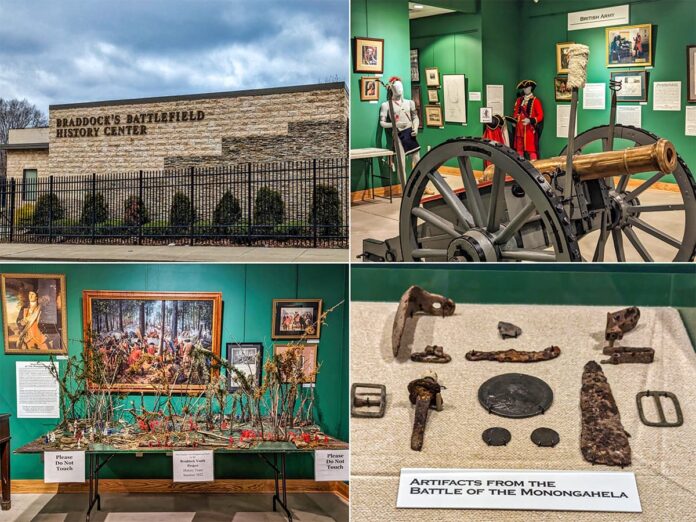
If you’re looking for information about visiting Braddock’s Battlefield History Center near Pittsburgh, you’re in the right place!
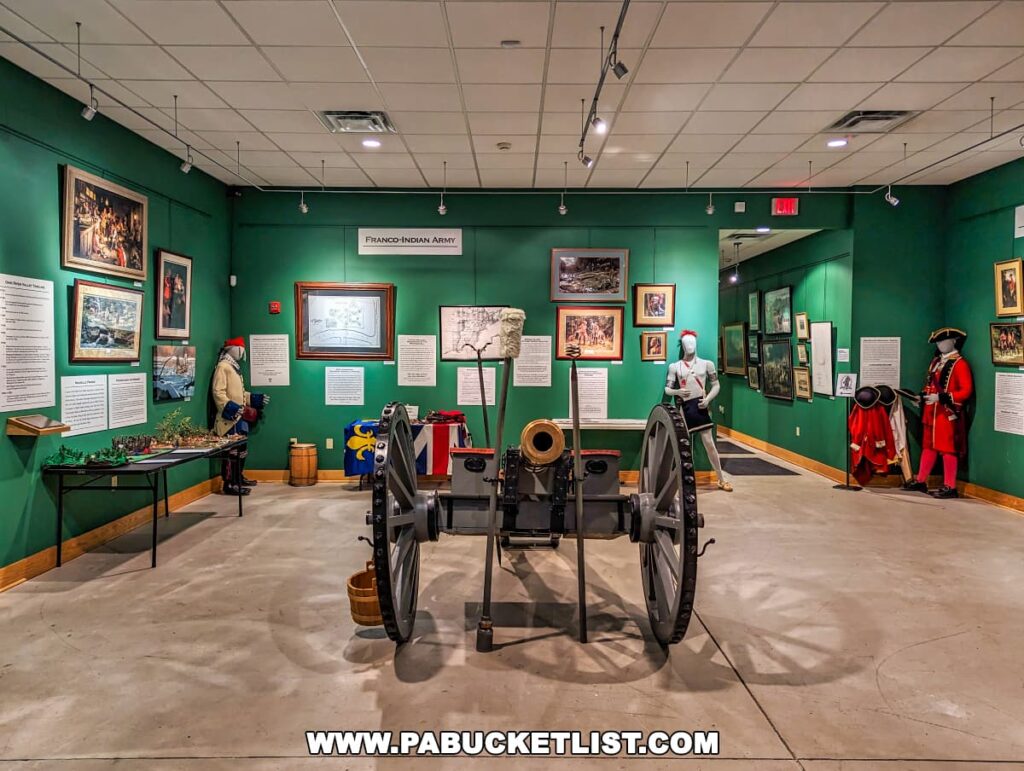
Braddock’s Battlefield History Center, located in North Braddock, just east of Pittsburgh, serves as a poignant reminder of one of the early and significant battles in American history.
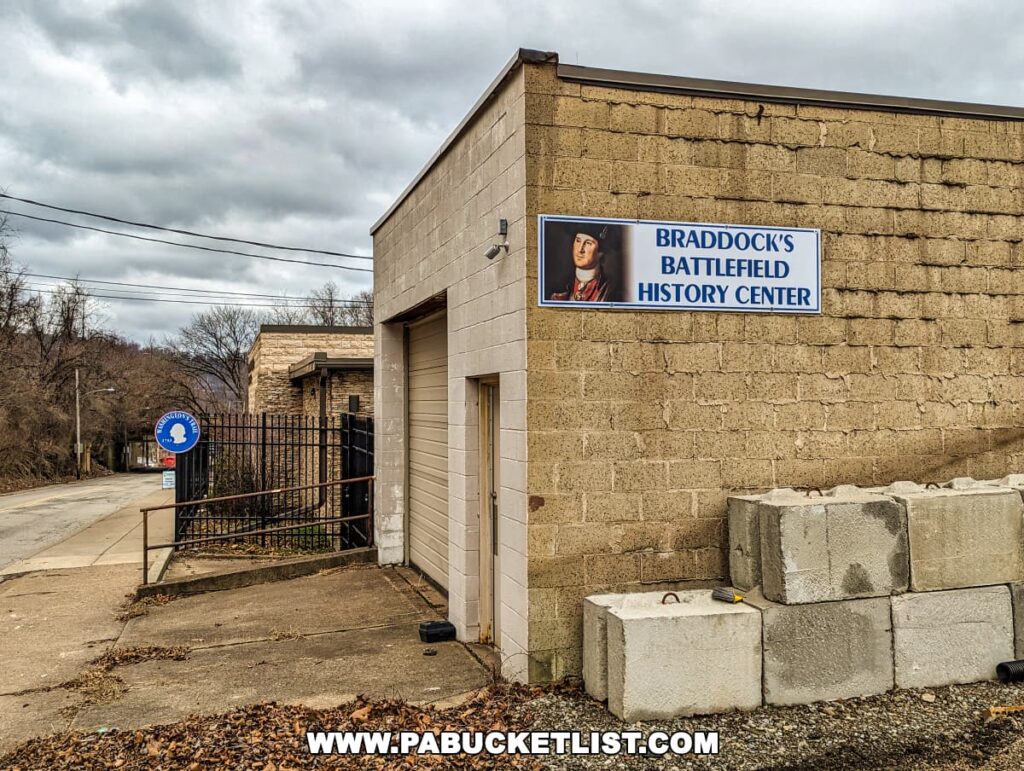
The center preserves and interprets the historical significance of the Battle of the Monongahela, also known as Braddock’s Defeat, which took place on July 9, 1755.
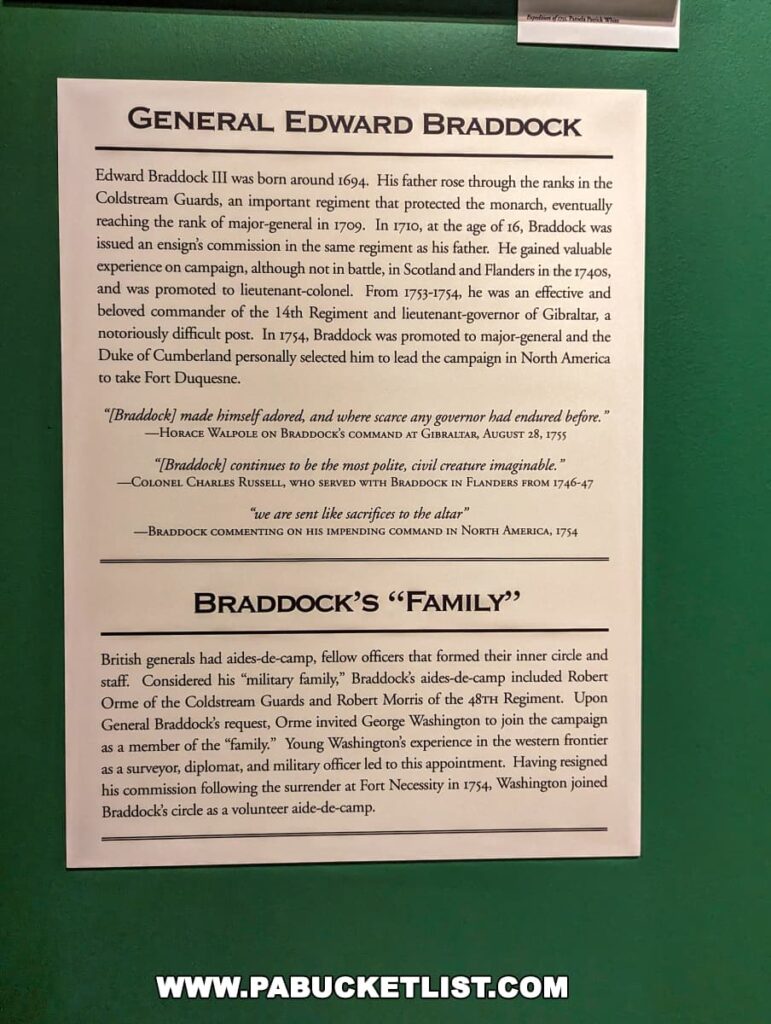
This battle was part of the French and Indian War, a pivotal conflict that set the stage for the American Revolution.
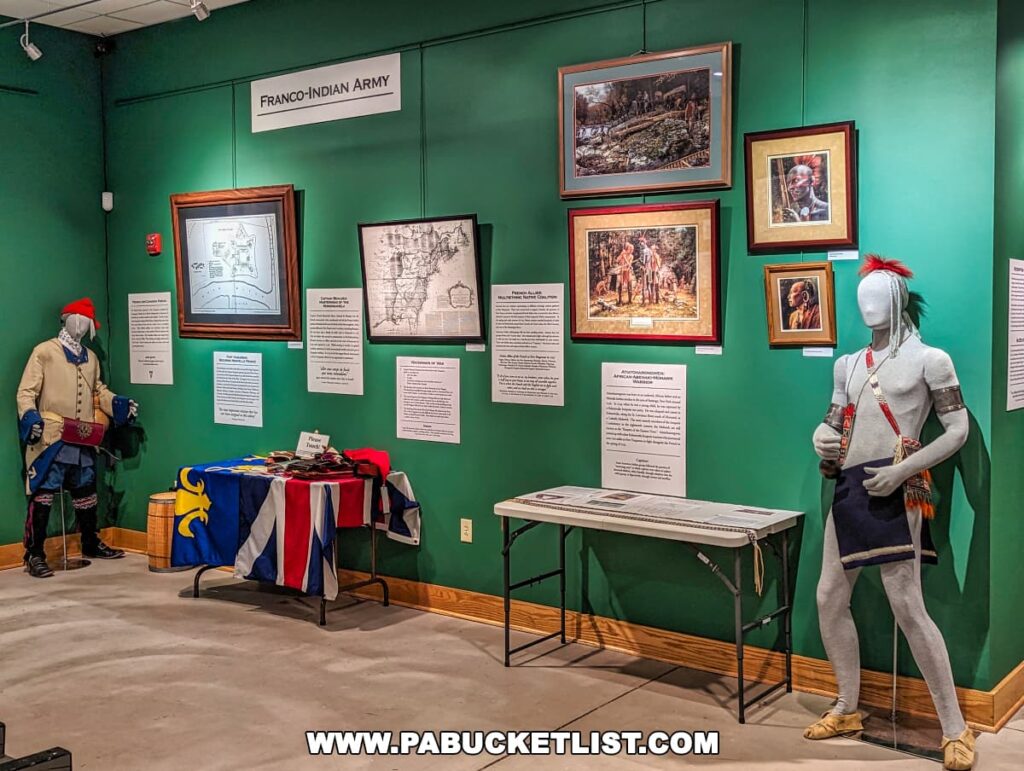
The Battle at Braddock’s Field was a disastrous encounter for the British and colonial troops led by General Edward Braddock.
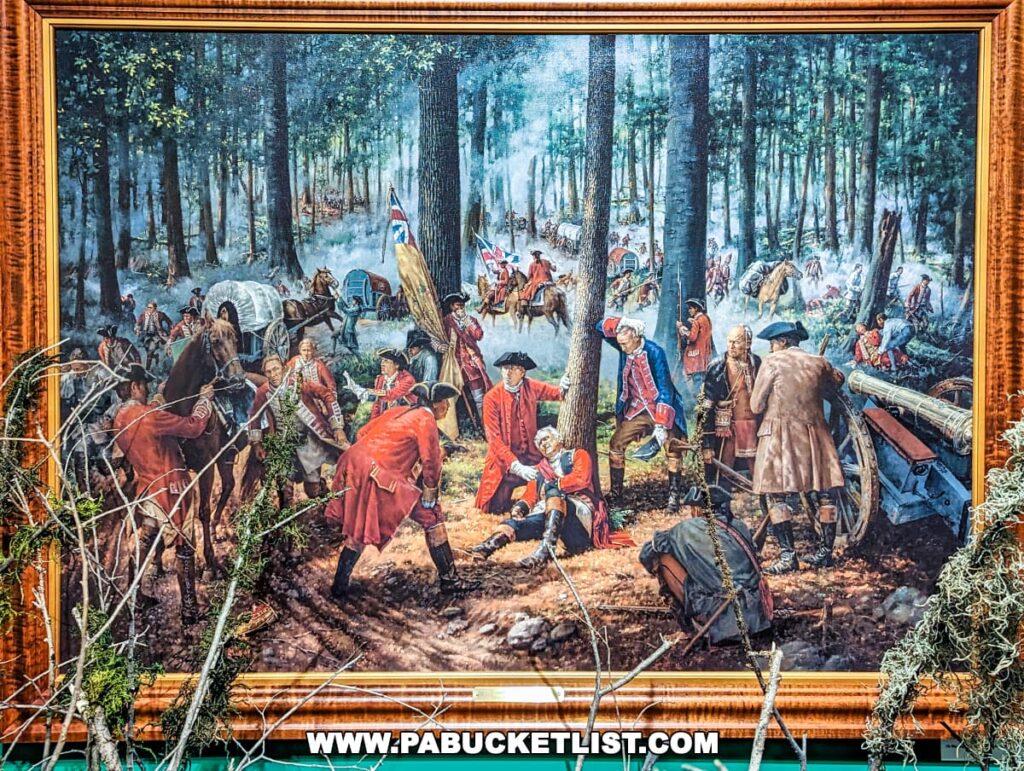
His mission had been to march his army from Cumberland, Maryland to Fort Duquesne (present day Point State Park in Pittsburgh) and capture it from the French.
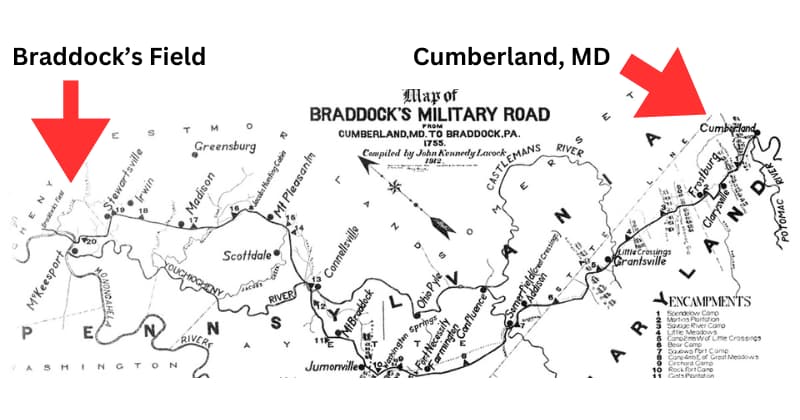
But roughly 10 miles southeast of Fort Duquesne, as Braddock’s army crossed the Monongahela River, they were ambushed by French and Native American forces, leading to a devastating defeat for the British.
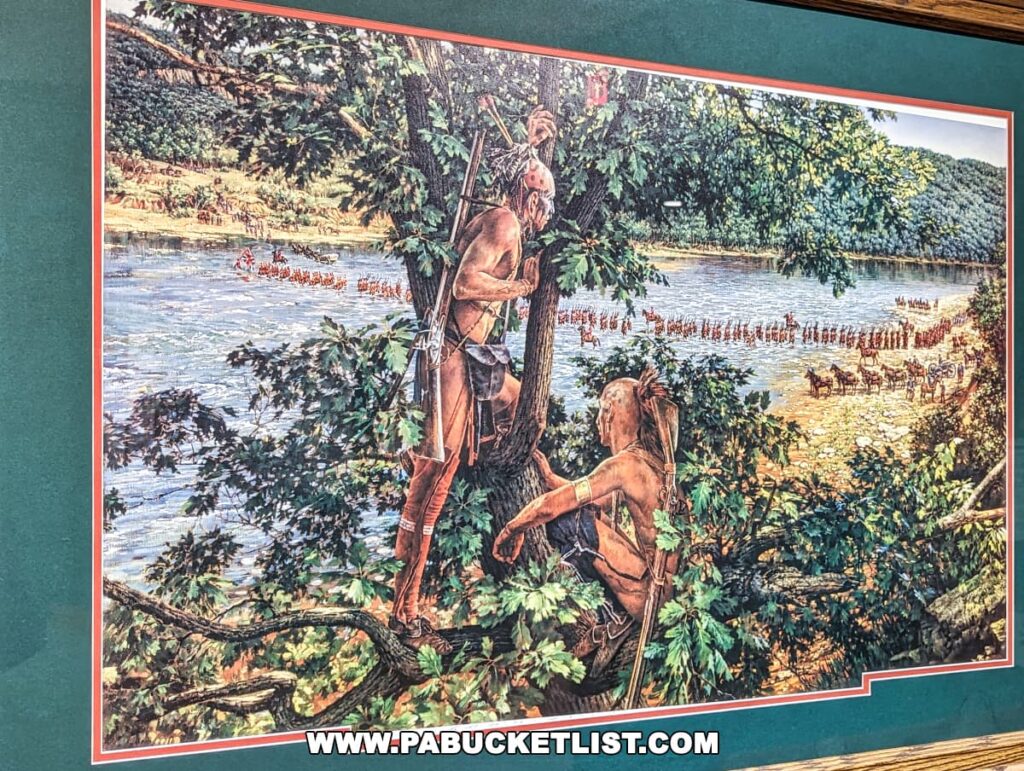
Braddock was mortally wounded in the fight and died during the retreat; he is buried near Fort Necessity in Fayette County.
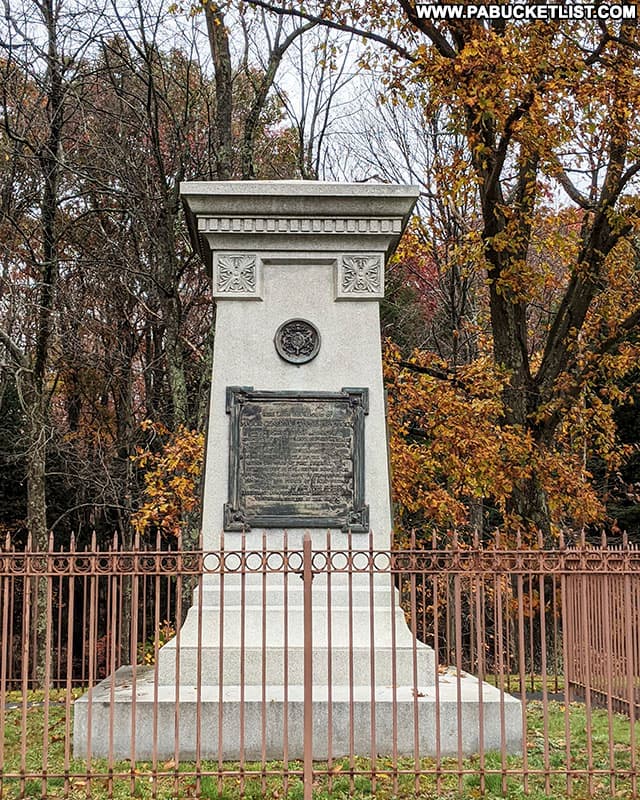
The battle is historically significant as it highlighted the challenges of colonial warfare, including the difficulties of navigating and fighting in the rugged American landscape.
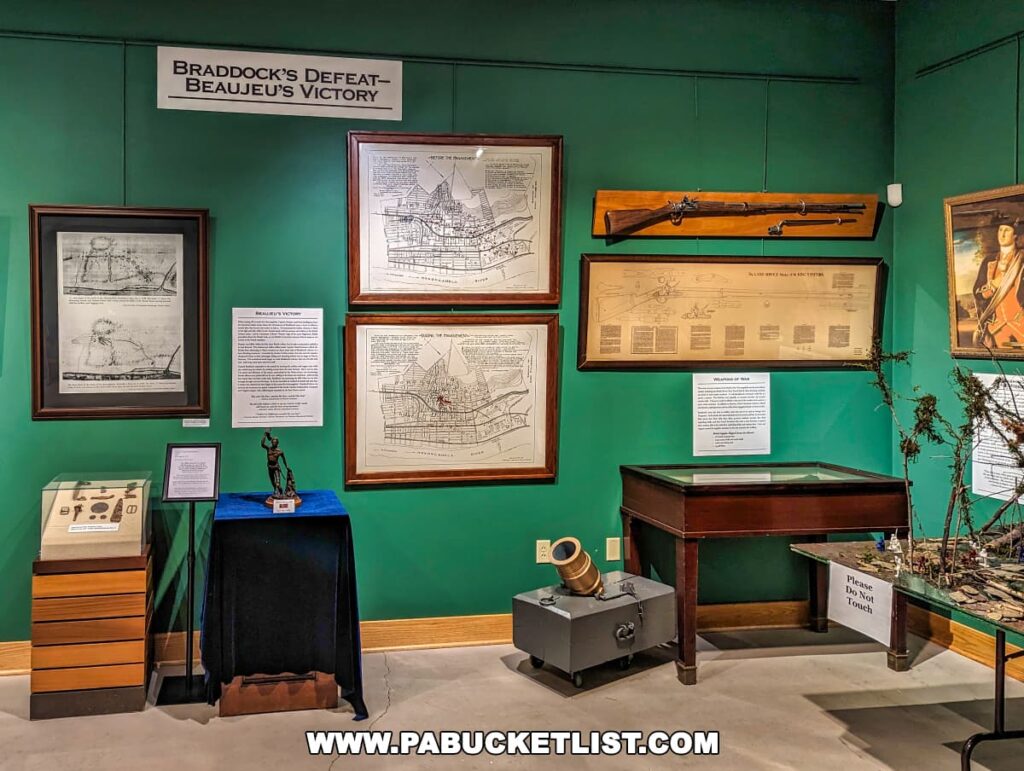
Directions | Hours | Admission Fees
Braddock’s Battlefield History Center is located at 609 6th St, Braddock, PA 15104.
From April – October the museum is open Thursday through Sunday 11AM – 4PM.
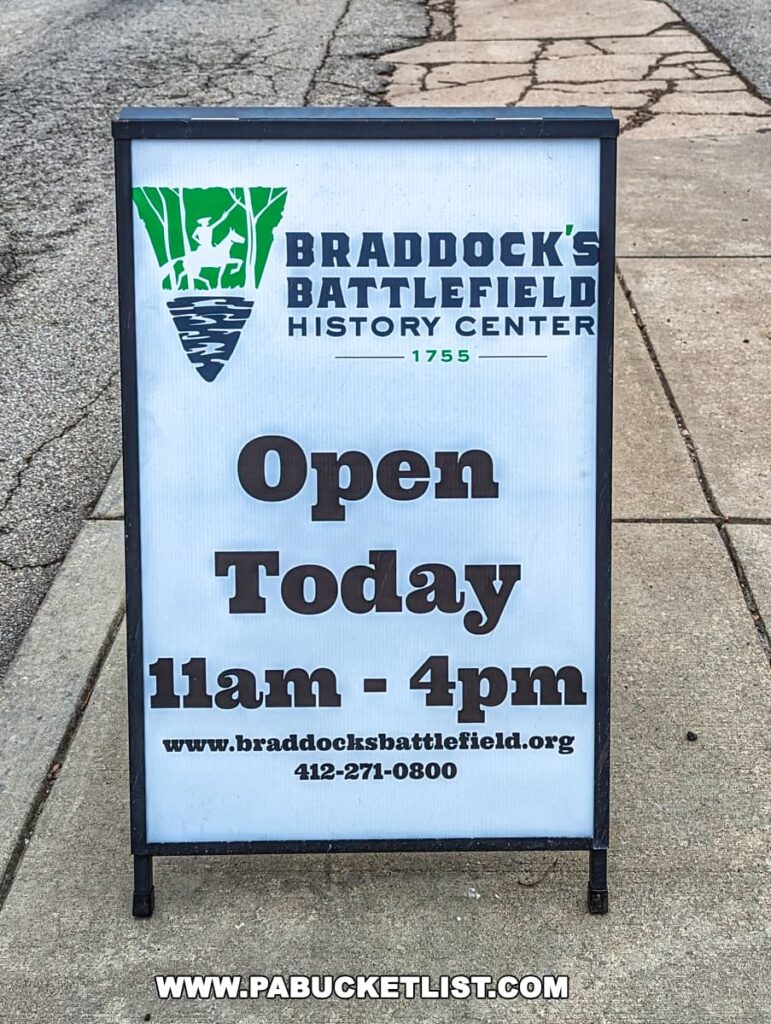
From November – March the museum is open Friday through Sunday 11AM – 4PM.
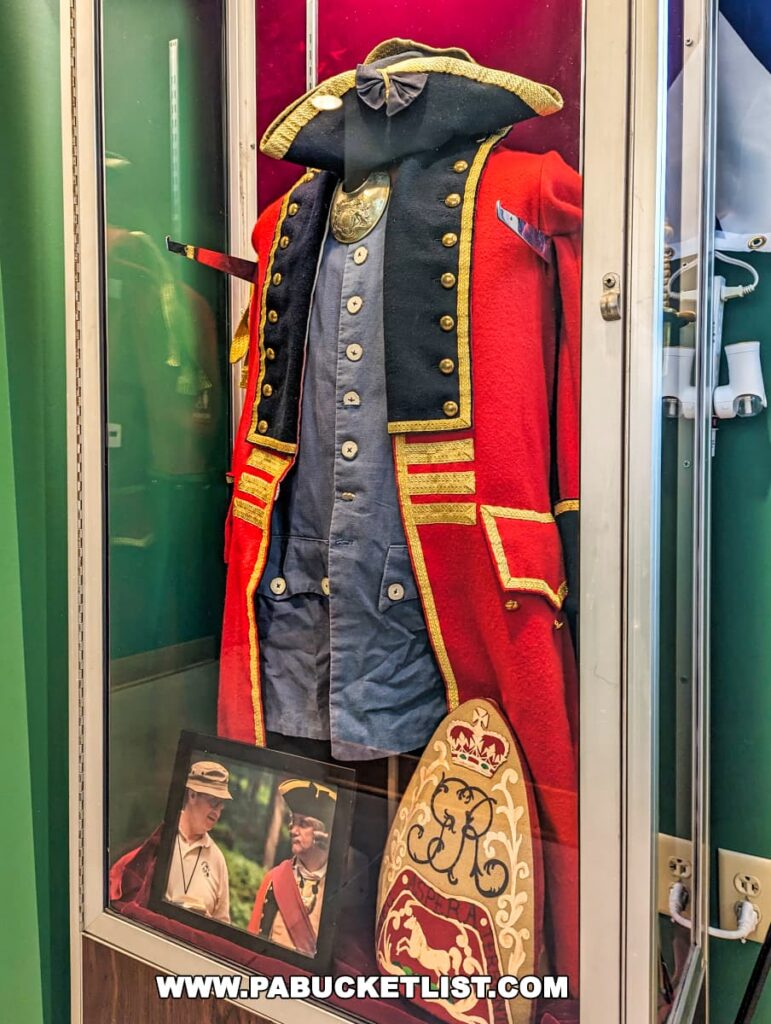
Admission fees are: Adults: $5.00 | Military, Veterans, & Youths (6-17): $3.00 | Children under 6: Free | Residents of 15104: Free
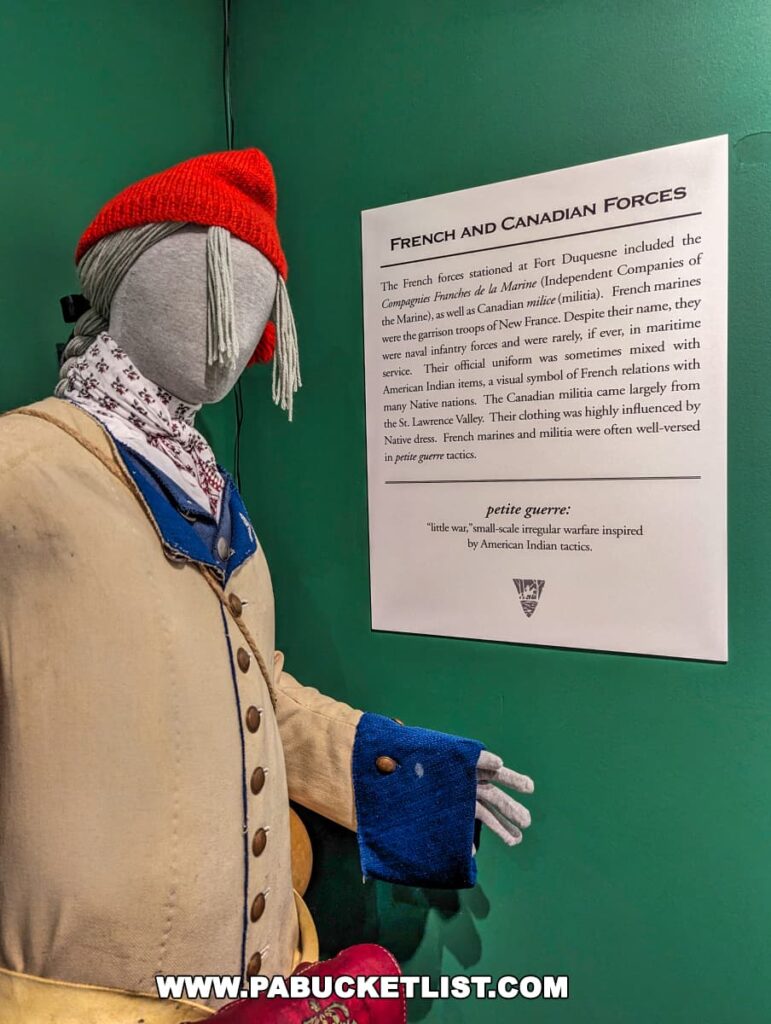
What You’ll See at the Museum
The museum recreates the Battle of the Monongahela using authentic documents and maps, genuine period firearms, replica uniforms from the era, and personal artifacts from the 18th century.
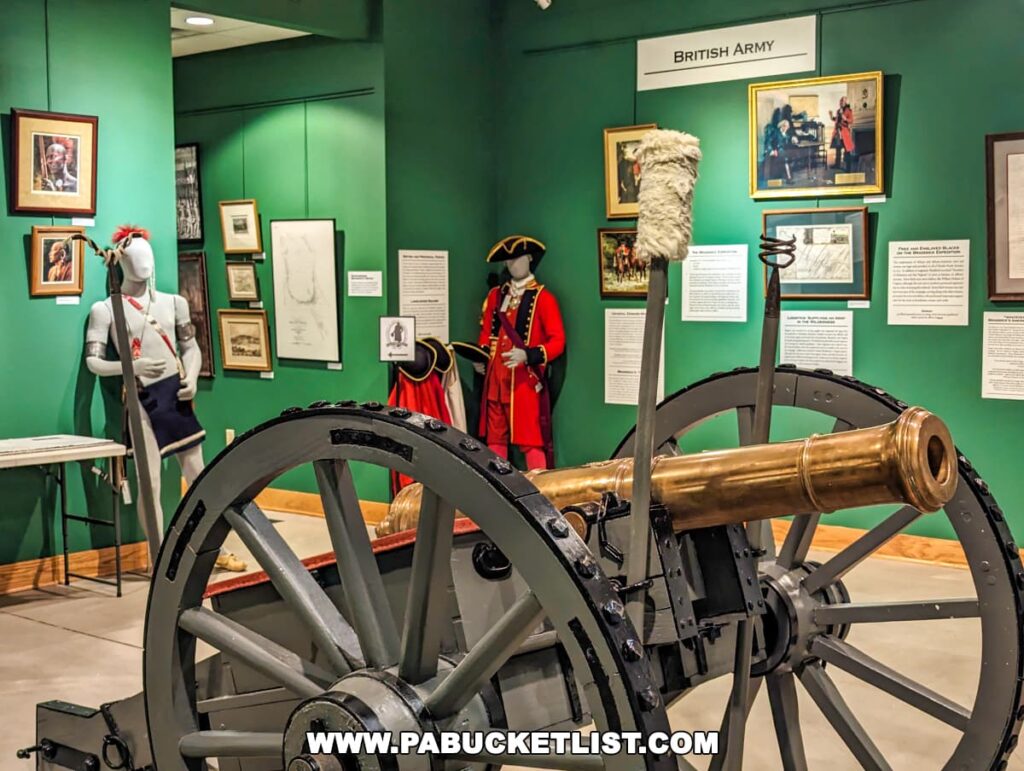
As you make your way around the main exhibit hall in clockwise fashion, the story of the battle and its aftermath plays out through storyboards and artist’s renderings.
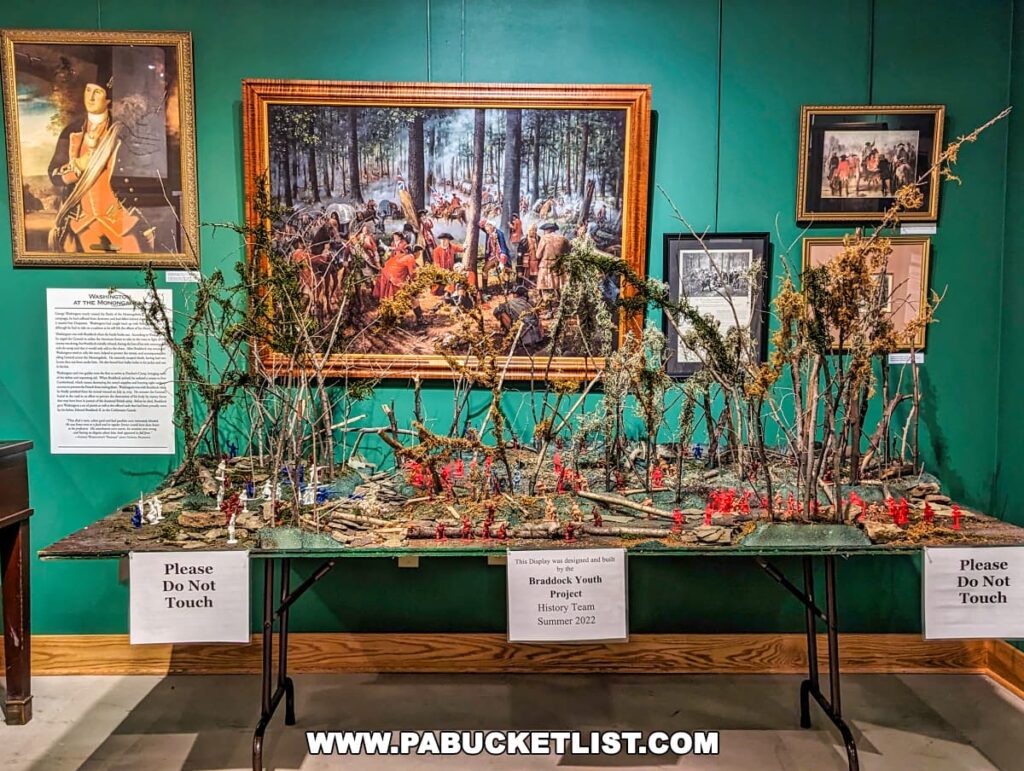
Because the battlefield itself was not preserved, precious few actual artifacts from the battle exist.
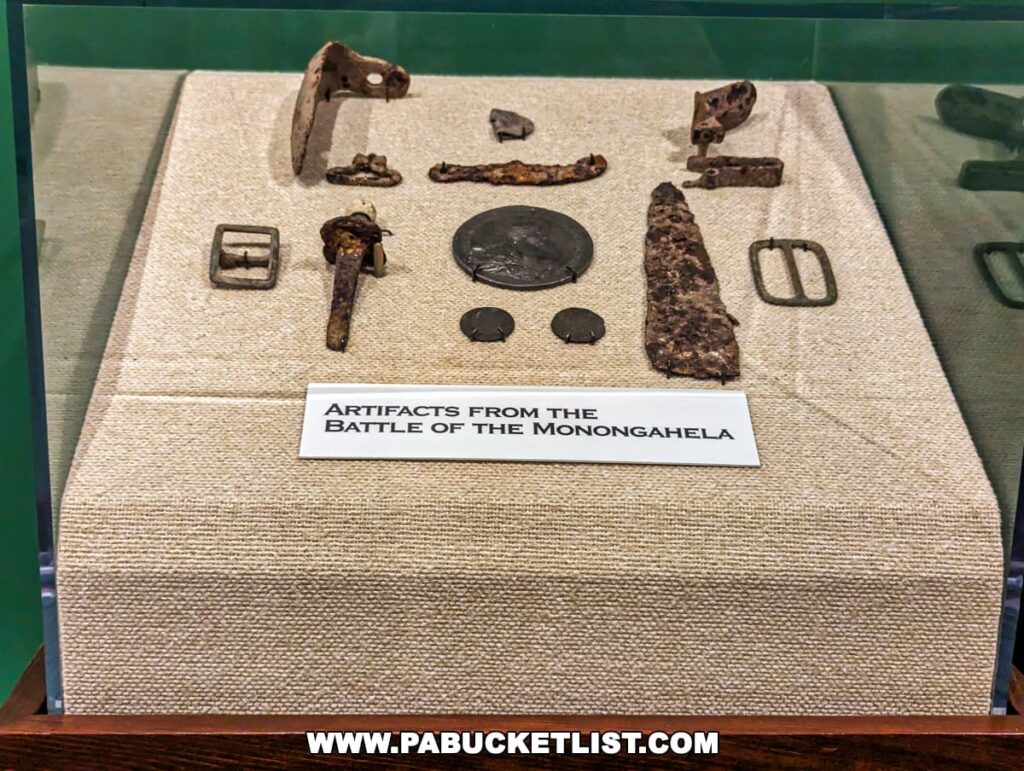
Although Braddock’s Battlefield History Center may not boast as extensive a collection of artifacts as its counterpart at Fort Ligonier, it effectively preserves and presents the story of the Battle of the Monongahela.
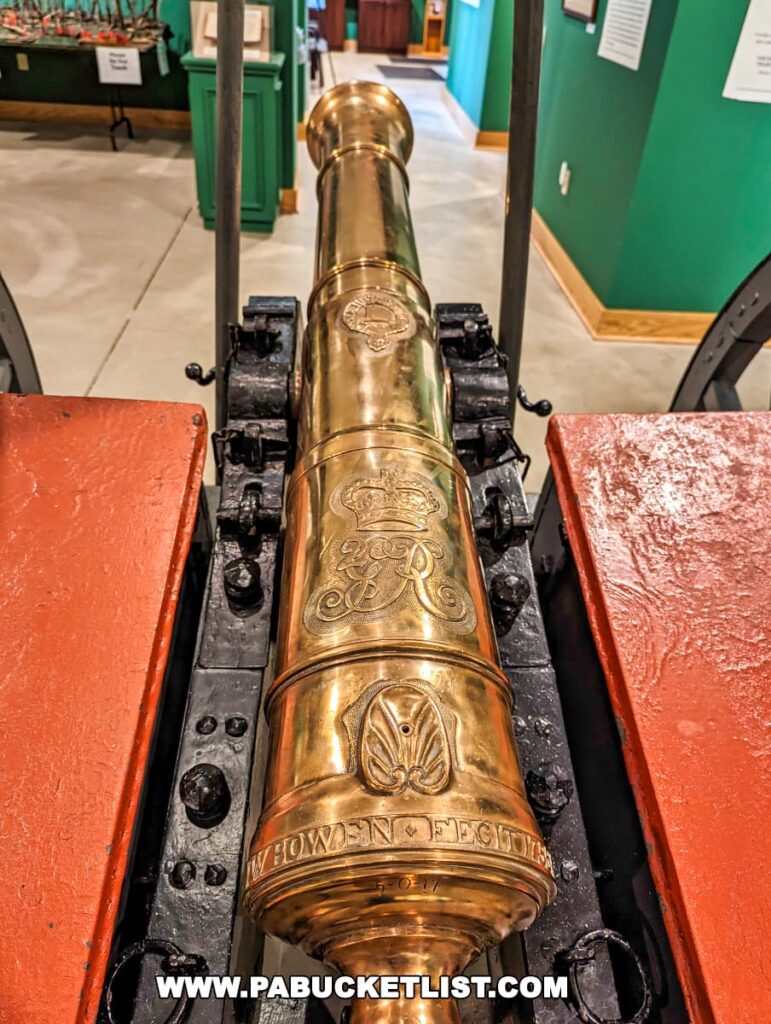
Nearby Historical Markers
Just a few blocks from the museum (see map above) you’ll find a historical marker near the spot where General Braddock was mortally wounded.
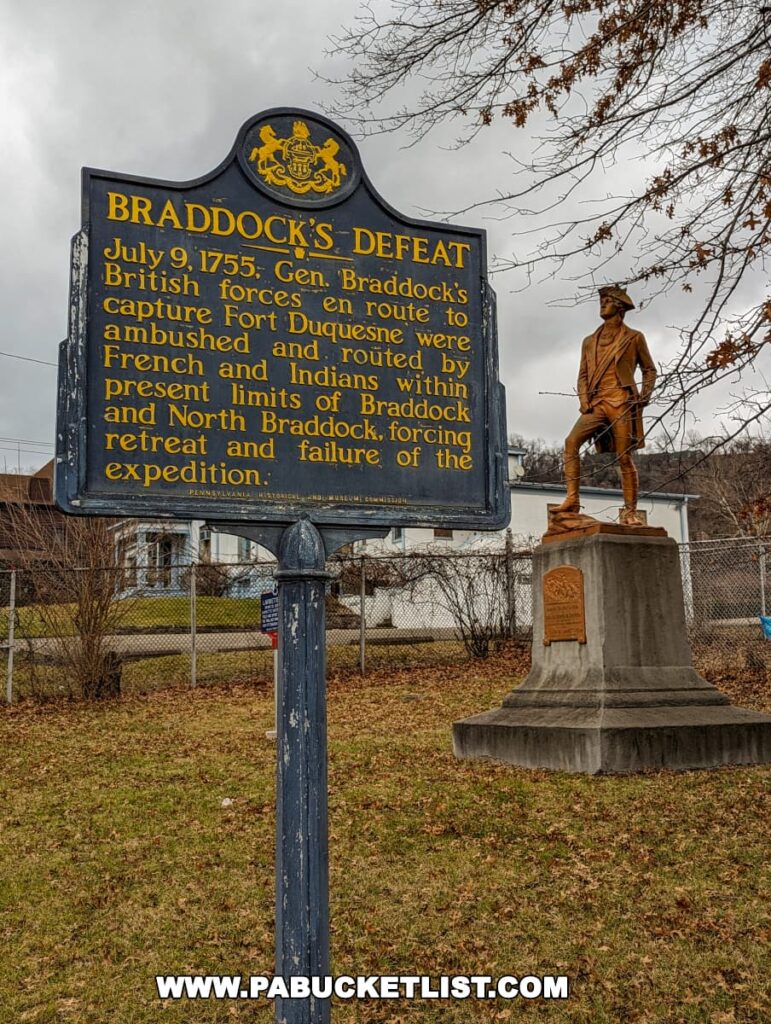
A nearby statue of George Washington was dedicated at the site of Braddock’s Field in 1930, on the 175th anniversary of the Battle of the Monongahela.
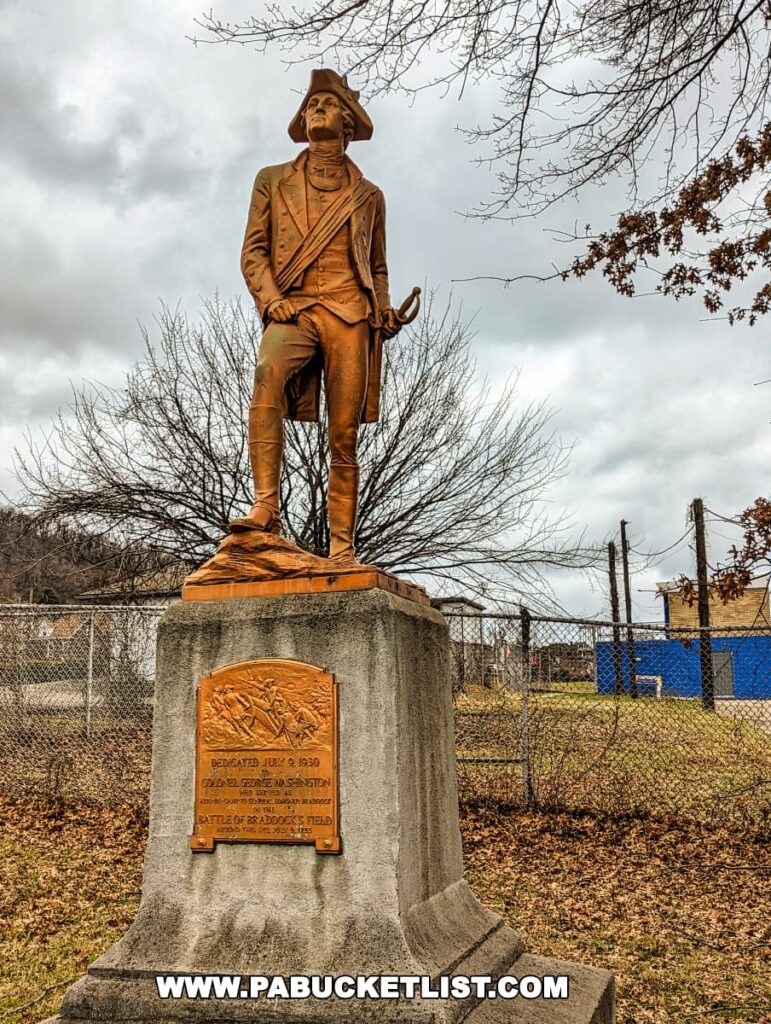
Serving as a colonial officer within the British Army, Washington gained insight into British military tactics and also recognized the Army’s weaknesses, knowledge which would serve him well during the subsequent American Revolution.
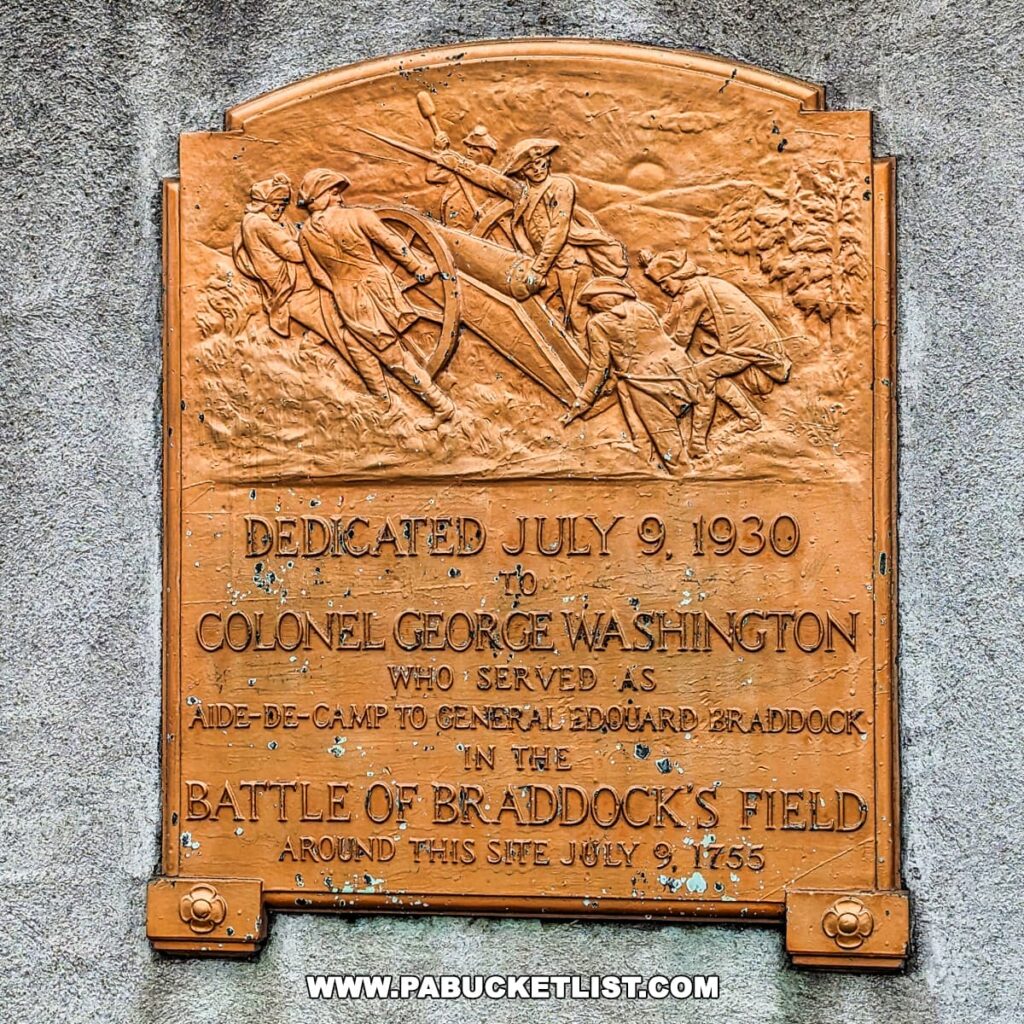
Forty years after the Battle of the Monongahela, Braddock’s Field also served as a rendezvous point for Pennsylvania militiamen protesting the new American government’s tax on whiskey.
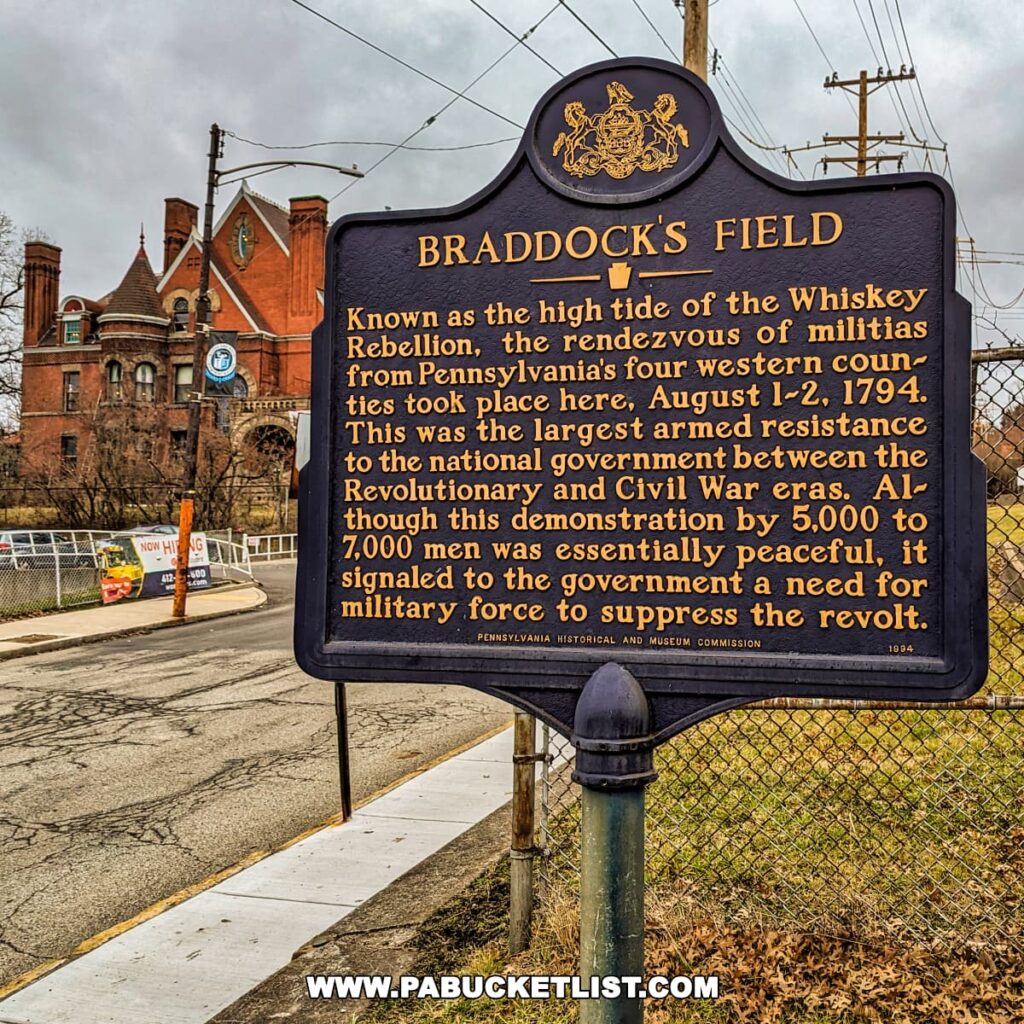
The former home of Carnegie Steel President Charles Schwab is also located on the site of Braddock’s Field, across the street from the historical markers.
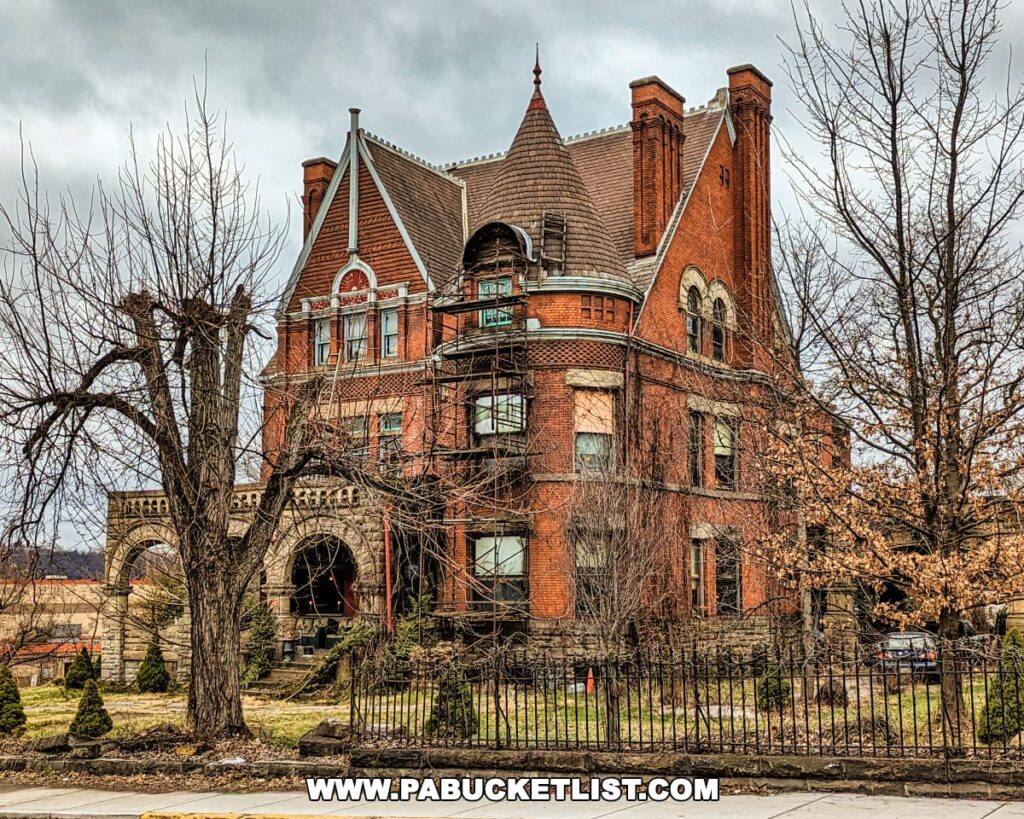
Final Thoughts
Braddock’s Battlefield History Center is more than just a museum; it is a gateway to understanding a crucial moment in American history.
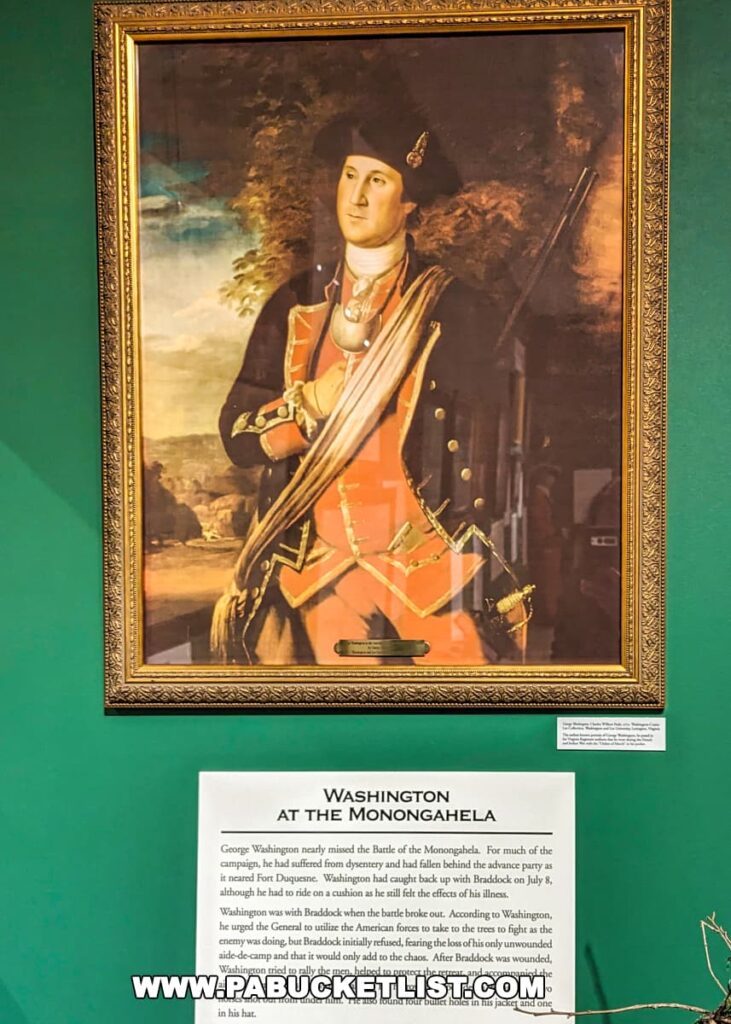
The center’s beautifully illustrated exhibits ensure that the narrative and significance of the Battle of the Monongahela will be preserved and remembered for many years to come.

Related Attractions
Fort Necessity National Battlefield in Fayette County preserves the site of the first battle in the French and Indian War.
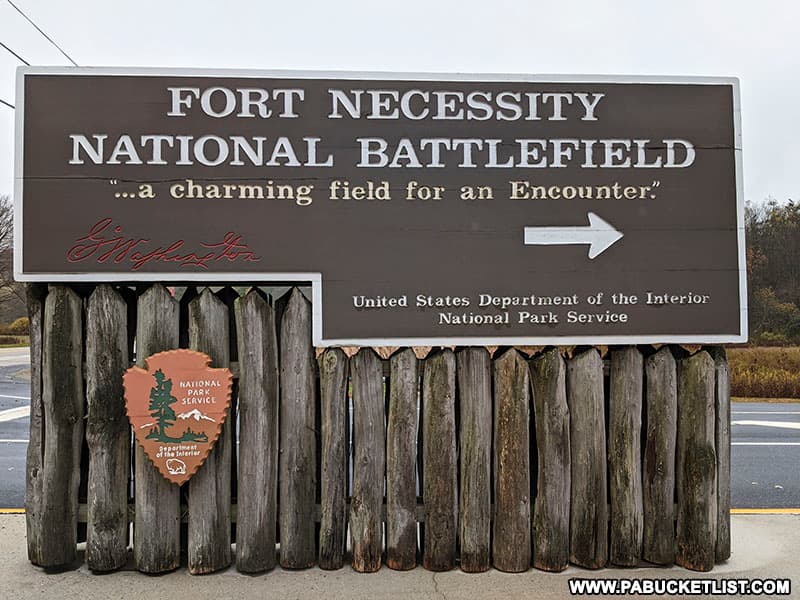
On July 3, 1754, 700 French and Native American troops surrounded George Washington and his 400 troops here, forcing his surrender a year before Braddock’s Defeat on the banks of the Monongahela.
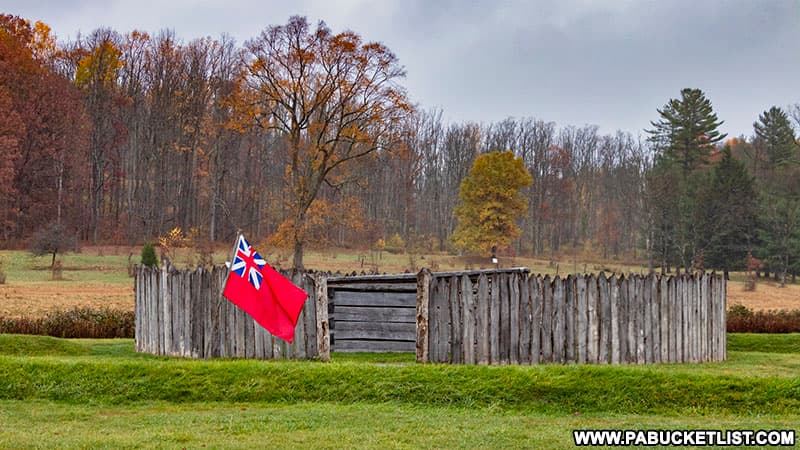
Fort Ligonier in Westmoreland County was the last in a series of forts built on orders from British General John Forbes in 1758, and it was from here that in November of 1758 he launched his successful campaign to capture the French Fort Duquesne, succeeding where Braddock had failed 3 years earlier.
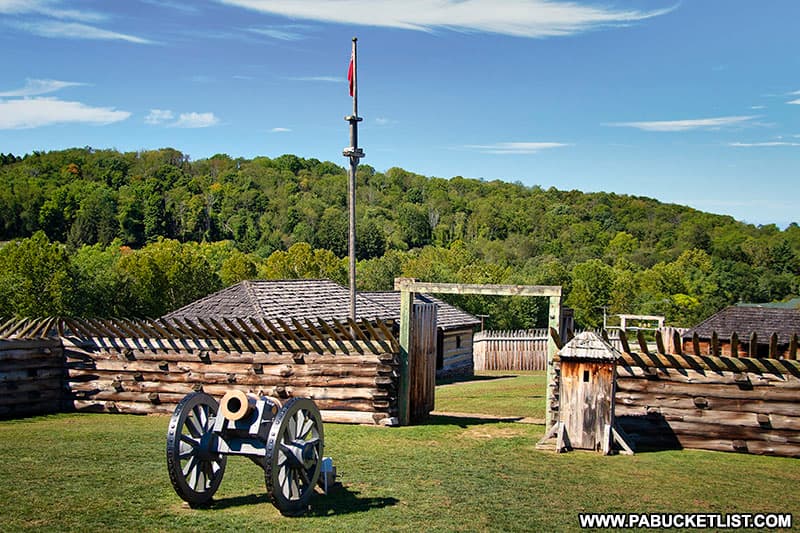
The museum at Fort Ligonier contains one of the most complete collections of French and Indian War artifacts in existence, many excavated from the ruins of the original Fort Ligonier itself.
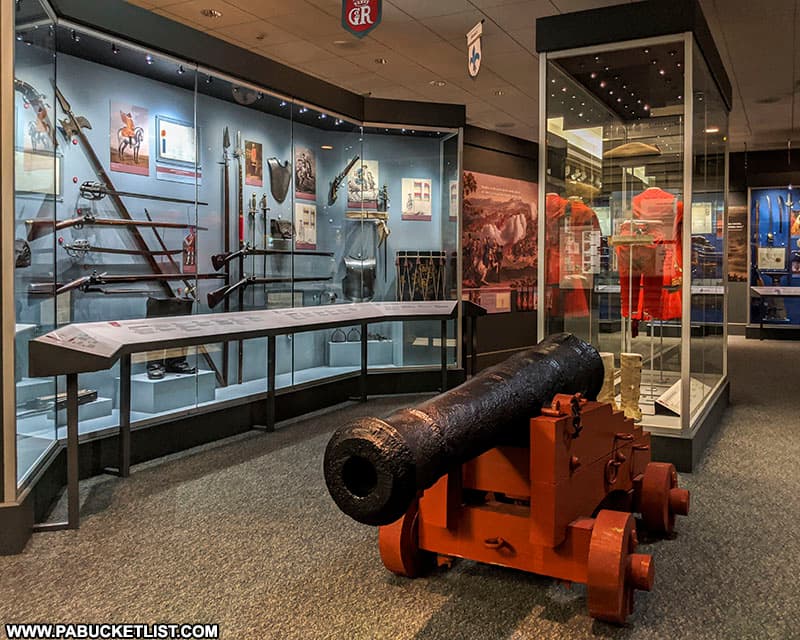
The Fort Bedford Museum in Bedford County pays tribute to the original Fort Bedford, built the same year as Fort Ligonier during the same military campaign by General Forbes.
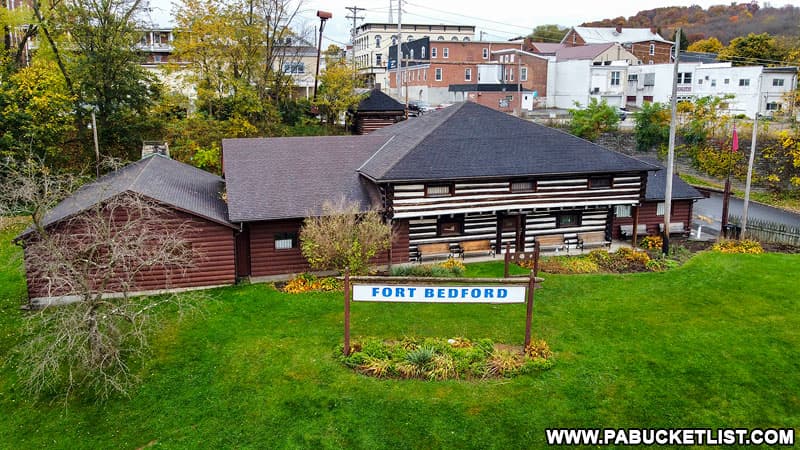
Like Fort Ligonier, the Fort Bedford Museum features exhibits and artifacts related to the French and Indian War and colonial life in general.
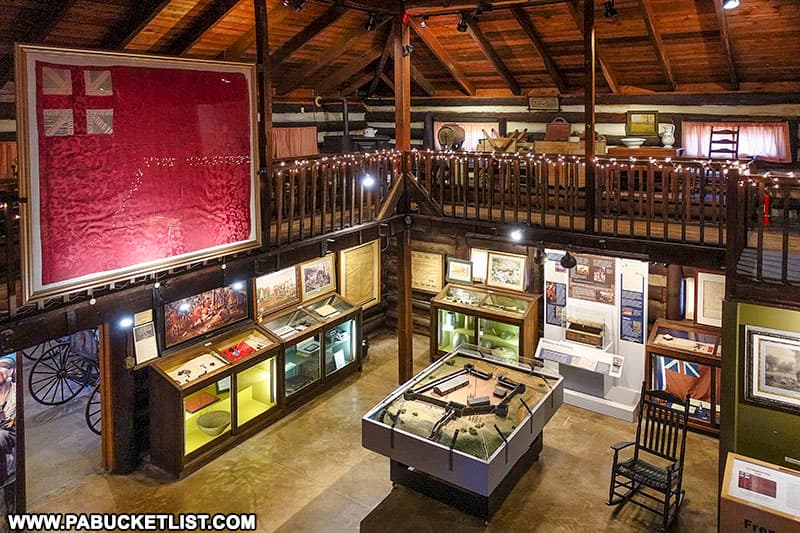
The Fort Pitt Museum, built near the ruins of Fort Duquesne, includes a significant focus on the French and Indian War.

Bushy Run Battlefield Park in Westmoreland County is the only historic site in PA that deals exclusively with Pontiac’s War.
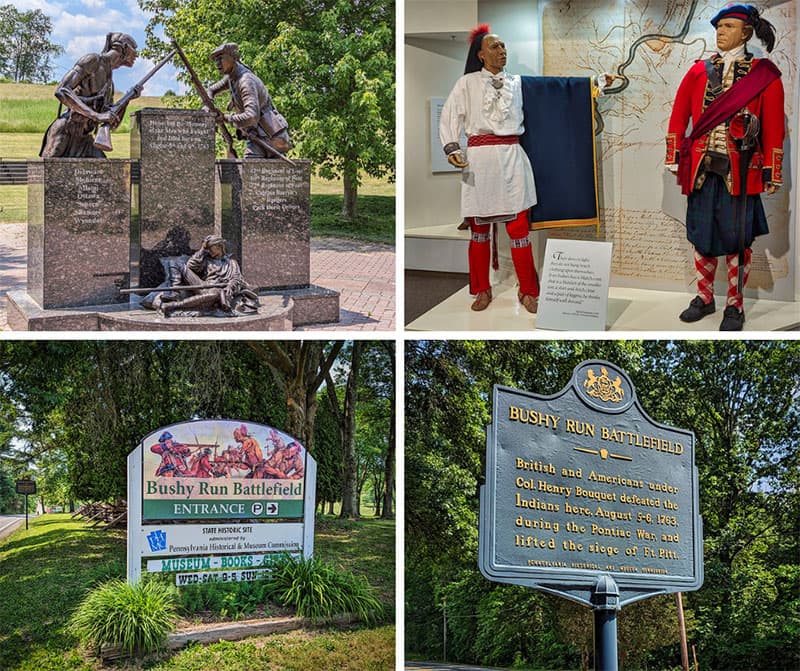
Occurring after the French and Indian War and before the Revolutionary War, Pontiac’s War was an effort by a loose confederation of Native American tribes to drive English settlers out of the Great Lakes region and back across the Allegheny Mountains.
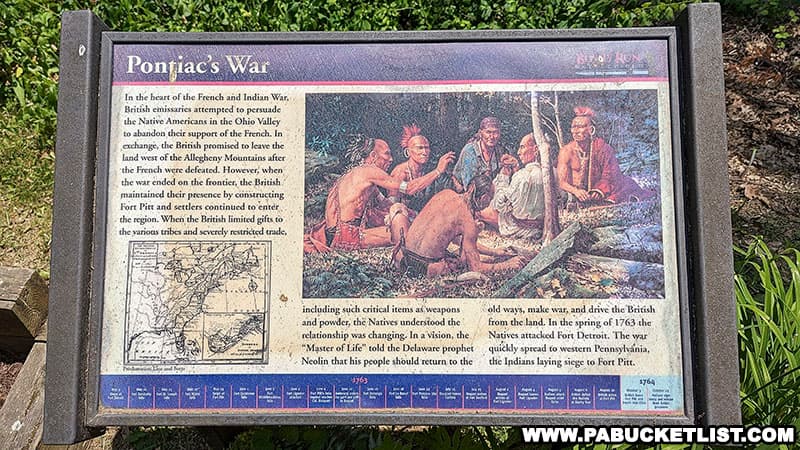
Did you enjoy this article?
If so, be sure to like and follow PA Bucket List on Facebook, Instagram, and/or Pinterest to learn more about the best things to see and do in Pennsylvania!
Click on any of the icons below to get connected to PA Bucket List on social media.


